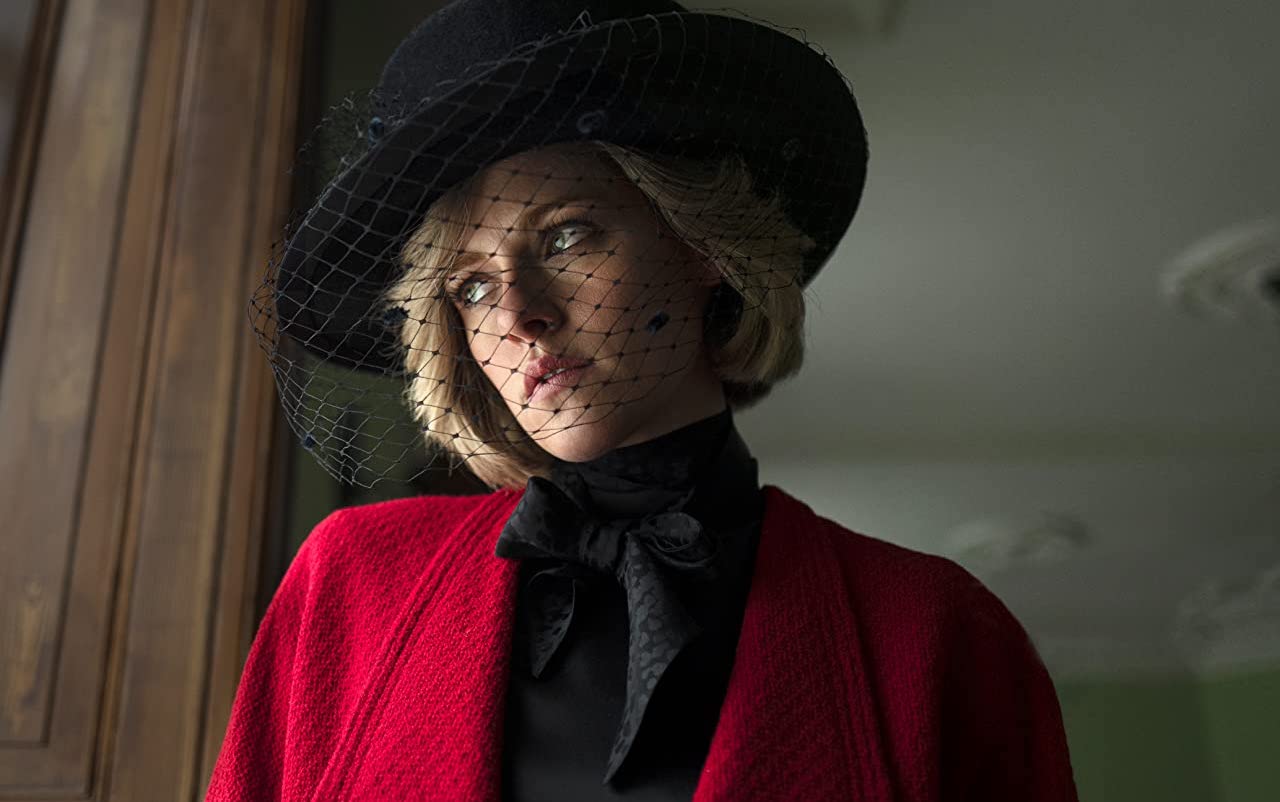Spencer (2021): A Movie Review
Pablo Larraín's cinematic portrait of Diana, an unconventional horror film, is heart-rending, joyful, suffocating, and tense.

Pablo Larraín always finds an interesting angle onto his subjects. He doesn’t have a flashy style, but walks the line between easy-to-consume and artistic with skill.
Spencer is about Princess Diana, but its story is unconcerned with “life events.” Instead, it explores her inner life — the psychology of living within the monarchy and what comes with it. It is less a biopic than an impressionistic, cinematic portrait. A slice of life over a fairly nondescript series of days at the palace.
The photography is brilliant. Some shots, such as Christmas decorations in the palace, glow with an unreality that feels like a fairy tale with something sinister and deceptively false about it. That's something close to how Larraín’s movie shows the monarchy.
Close-up shots of Diana (Kristen Stewart) have the opposite feeling to hyperreal shots of royal splendour — they show Diana as expressive in emotion, joyful, light-shining. They give the movie an authentic life force.
Sounds design is great, too. Deafening rabble suggests overwhelming monotony. Sharp sonic stabs break through reality to deliver disquieting visions. Quiet, gentle, or harmonic sounds create positive and negative moods at different times (stifling and uptight, or soft and caring). The soundtrack is sparse, but its selections are well-chosen.
The movie presents the institution of monarchy as an imposing relic of an oppressive past. Royalty from centuries gone appear to Diana in anxiety-ridden dreams, flashing into her sight like undead messengers coming to both haunt her and save her from their fate.
This is a horror film with the monarchy as a dark force that conjures false realities. Always watching, stifling the joy of life. The escape from it is into the relatively glorious normality of everyday life — fast food and popular culture, sightseeing as a tourist in the big city, or stopping into a roadside café to ask directions.
The film captures moments of life, in the sense of a moment where you feel truly alive and present, and moments of death, in the sense of a moment where death feels preferable to the life in front of you. These moments burst from the screen and carry surprising emotional resonance.
One of the ideas the movie expresses is that the monarchy presents its traditions as healthy, or appropriate to modern times, when they are not. Diana has acute perception about how strange the institution is, and struggles to abide those who glibly (or enthusiastically) play by its rules.
Kristen Stewart’s performance is bold and theatrical. She puts on screen deep vulnerability and gentleness, next to a simmering rage at her continual surveillance, and a determined spirit to drive through the darkness towards joy, humour, emotional honesty, and fun.
The scenes where Diana is able to let her hair down in the company of her boys give a heartwarming contrast to the dark atmosphere that otherwise dominates. Moments of happiness and authentic, simple expressions of joy and humour are rendered powerful by how fleeting they are.
The movie is atmospheric to an extreme. Comparisons to The Shining (1980) are spot on. The palace feels alive with ghosts, both living and dead.
A crucial scene between Charles and Diana at a pool table also echoes Kubrick’s Eyes Wide Shut (1999), where the facade drops and “the truth” is put to our protagonist in blunt terms. An attempt by the conspirator to recruit the victim into the conspiracy.
Charles explains to Diana that she, like all members of the royal family, is required to be two people. The public does not want them to be normal human beings.
“Sorry. I thought you knew.” Charles offers in consolation, with some desire to offer Diana solace.
As well as the haunting, dark presence of monarchy and its past, there is a force of light hidden in the movie’s world. As if the entire creative force of the film, its artistic energy, is trying to break through the fabric of the world it is showing and rip it apart.
This presence is largely unspoken, but a mood develops, like a giant storm building off camera. Or an earthquake forming under the royal hunting grounds.
It is a force of anti-establishment rage, built on Diana’s spiritual captivity and the suggested fate of her boys. Her boys become more of a focus towards the end of the film, giving this force a sense of urgency.
The movie is very cinematic, but not in obvious ways. There are no explosions or special effects, but you won't feel the same sweeping or jolting emotion in moments, timed expertly with immersive audiovisual rhythm, if you don't experience them on the big screen. It’s a movie to see in theatres if you can (shamefully, the film has been given no theatrical run in France, where it will go straight to Amazon Prime instead).
If you buy into the emotional authenticity underneath the stiff-upper-lip mannerisms (and I did), the movie becomes something pretty great. It paints a portrait that is both heart-rending and heartwarming, of a woman struggling to exist in surroundings she is psychologically allergic to.
She is also shown to be a mother trying to offer her children love in healthy and simple forms that are not provided by their environment. Her fight is to stop them from being swept into the workings of a joyless and violent institution she has determined to be unfit for their souls.
Spencer excels in cinematography, atmospheric mood-building, and sound design. The script is well-written, and the performances are enjoyable. In spirit, though, this movie exists as a stirring and thoughtful cinematic portrait of Diana, much like paintings of royalty from previous centuries.
Larraín has a keen eye for such portraits, and this makes for a great companion film with Jackie (2016) — a movie that also concerns a woman from recent history, caught up in the frenzied violence and dehumanising buzz of modern society, trapped inside the instruments and symbols of power at its heart.
James Lanternman writes movie reviews, essays, and moonlit thoughts. You can reach him at [email protected].
Previously… Sketches of a Narcissist: Part 1
